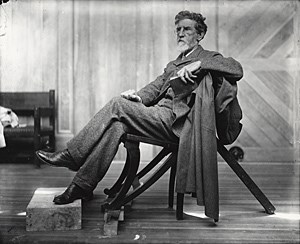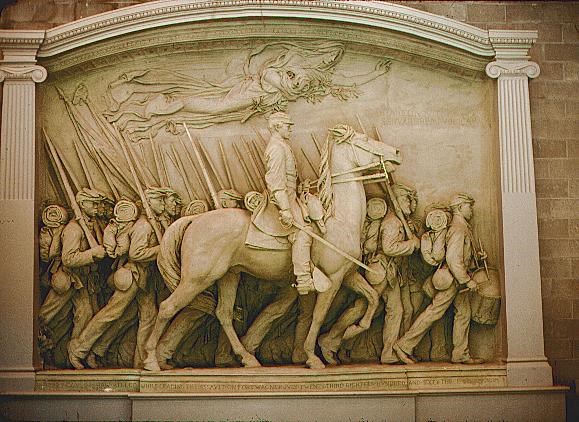Last updated: September 4, 2020
Article
The President James A. Garfield Death Mask

National Park Service
On display in the James A. Garfield National Historic Site visitor center is the bronze death mask and hand of President James A. Garfield. The mask weighs 7 1/2 pounds, and the hand 2 1/2 lbs.
It was common practice into the 20th century for a plaster facial impression to be made moments after the death of a famous person. Sometimes the hand was cast as well. The purpose was to capture the last image of the person to use in later portraits or statues. After President Garfield died on September 19, 1881, the family asked the famous sculptor, Augustus Saint-Gaudens, to make a death mask of President Garfield.
To create the mold, Saint-Gaudens would first have covered the deceased President’s face with lard and then painted several layers of plaster over it. When the plaster dried, the sculptor would have removed the plaster impression and taken it to his studio and used it to create a mold, which would later be used to create another mold that would be cast in bronze. The family had the last mold destroyed so that no other copies could be made.

Smithsonian Institution American Art Museum
Saint-Gaudens was an Irish-born American sculptor of the Beaux Arts period. He designed monuments to Civil War heroes such as William Tecumseh Sherman, Abraham Lincoln, and Robert Gould Shaw. He designed the $20 double eagle gold coin and the $10 Indian head gold coin.
Masks have been in existence since the time of the Egyptian pharoah Tutankhamun, whose solid gold burial mask is an object of extreme beauty. At the end of many remarkable lives, historic figures such as Shakespeare, Washingon, Napoleon, Newton, Beethoven, Lincoln, and Lenin were immortalized with death masks.

Boston College
Before the widespread availability of photography, the death mask was also used as a forensic tool to aid relatives in identifying a desceased body if the loved one was a missing person who had already been buried. One such mask recorded the face of an unidentified 16 year-old woman found drowned in the Seine in Paris in the 1880s. She was considered so beautiful that reproductions of the mask became very popular. In 1960, the face of ResuciAnni, the world’s first CPR training mannequin, was modeled after this drowned young woman.
Written by Pat Coil, Volunteer, James A. Garfield National Historic Site, June 2013 for the Garfield Observer.
